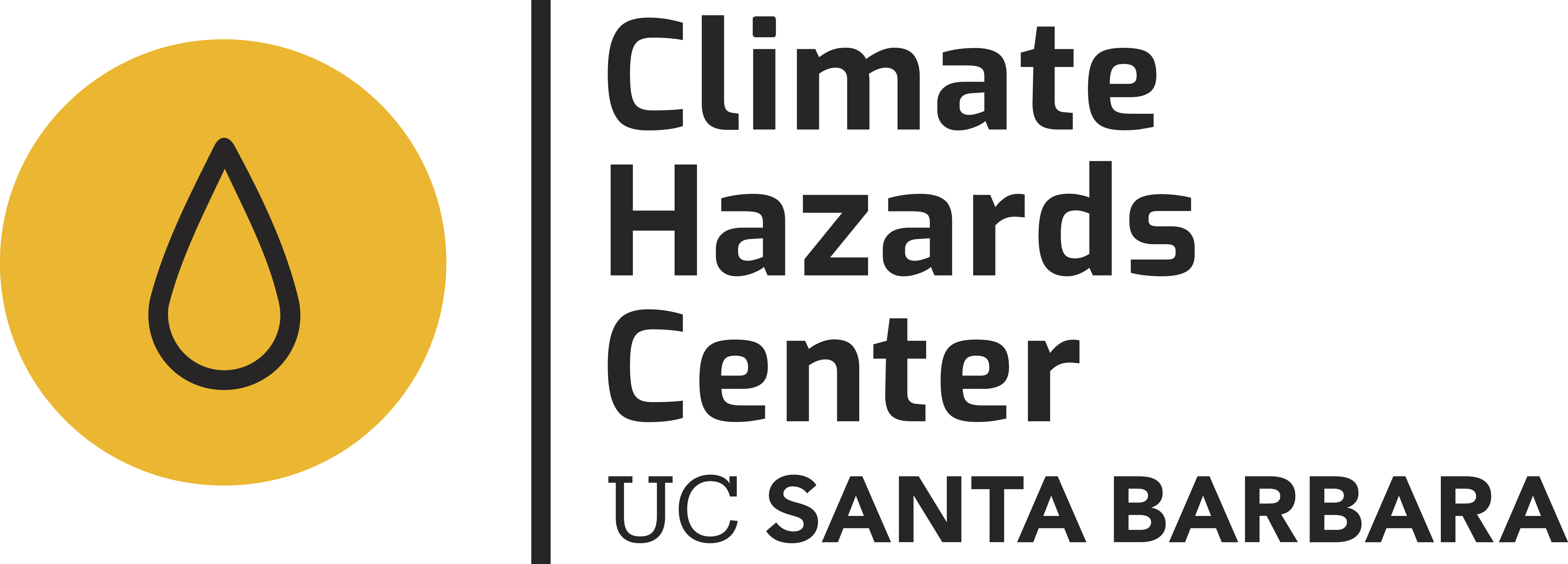The seasonal probabilistic forecasts presented here are derived from a multi-model ensemble (MME) of forecasts from two distinct and widely-used dynamical climate model forecasting systems: The
North American Multi-Model Ensemble (NMME) forecast system (
Kirtman et al., 2014) and the European Centre for Medium-Range Weather Forecasts (ECMWF)’s fifth generation seasonal forecast system (SEAS5) (
Johnson et al., 2017).
The Climate Hazards Center converts the individual model ensemble forecasts into multi-model ensemble (MME) probabilistic forecast maps of seasonal percentile/SPI for global and regional areas. These seasonal MME forecast maps are updated around the 7th day of the month.
The links below provide direct access to MME forecasts for 3-month precipitation and 2m temperatures, starting with the current month. An ensemble of 130+ NMME and ECMWF members are used for forecasts out to six months. An ensemble of 80+ NMME members are used for forecasts out to eight months. The
MME Archive additionally provides access to an NMME-only MME map set. Read on for more information about these forecasts.
The seasonal probabilistic forecasts presented here are derived from a multi-model ensemble (MME) of forecasts from two distinct and widely-used dynamical climate model forecasting systems: The North American Multi-Model Ensemble (NMME) forecast system (Kirtman et al., 2014) and the European Centre for Medium-Range Weather Forecasts (ECMWF)’s fifth generation seasonal forecast system (SEAS5) (Johnson et al., 2017).
The Climate Hazards Center converts the individual model ensemble forecasts into multi-model ensemble (MME) probabilistic forecast maps of seasonal percentile/SPI for global and regional areas. These seasonal MME forecast maps are updated around the 7th day of the month.
The links below provide direct access to MME forecasts for 3-month precipitation and 2m temperatures, starting with the current month. An ensemble of 130+ NMME and ECMWF members are used for forecasts out to six months. An ensemble of 80+ NMME members are used for forecasts out to eight months. The MME Archive additionally provides access to an NMME-only MME map set. Read on for more information about these forecasts.
Forecast Categories
For each type of normalization (percentile or SPI) there are three types of maps:
Tercile category maps: These maps show the forecast probability for one of these three categories: Below-Normal (< 33 percentile or < -0.44 SPI), Normal (33 to 67 percentile or -0.44 to 0.44 SPI), or Above-Normal (> 67 percentile or > 0.44 SPI). The climatological probability for these categories is a ~33% chance. The values are shown for MME forecast probabilities which exceed a 40% chance.
Elevated category maps: These maps show the forecast probability for one of these two categories: Very Below-Average (< 20 percentile or < -0.84 SPI) or Very Above-Average (> 80 percentile or > 0.84 SPI). The climatological probability for these categories is a ~20% chance. The values are shown for MME forecast probabilities which exceed a 30% chance.
Severe category maps: These maps show the forecast probability for one of these two categories: Extremely Below-Average (< 10 percentile or < -1.28 SPI) or Extremely Above-Average (> 90 percentile or > 1.28 SPI). The climatological probability for these categories is a ~10% chance. The values are shown for MME forecast probabilities which exceed a 20% chance.
Giannini, Alessandra, et al. "Advances in the lead time of Sahel rainfall prediction with the North American Multimodel Ensemble." Geophysical Research Letters 47.9 (2020): e2020GL087341.
Johnson, Stephanie J., et al. "SEAS5: the new ECMWF seasonal forecast system." Geoscientific Model Development 12.3 (2019): 1087-1117.
Kirtman, Ben P., et al. "The North American multimodel ensemble: phase-1 seasonal-to-interannual prediction; phase-2 toward developing intraseasonal prediction." Bulletin of the American Meteorological Society 95.4 (2014): 585-601.
Shukla, Shraddhanand, et al. "Assessing North American multimodel ensemble (NMME) seasonal forecast skill to assist in the early warning of anomalous hydrometeorological events over East Africa." Climate Dynamics 53.12 (2019): 7411-7427.
Acknowledgments
CHC acknowledges the agencies that support the NMME and ECMWF forecast systems, as well as the data providers: The International Research Institute for Climate and Society (IRI) Data Library based at Columbia University, and the Copernicus Climate Change Service (C3S) Climate Data Store (CDS). We thank the climate modeling groups (Environment and Climate Change Canada, NASA/GMAO, NOAA/GFDL, NOAA/NCEP, University of Miami, ECMWF SEAS5) for producing and/or making available their model output. NOAA/NCEP, NOAA/CTB, and NOAA/WPO jointly provided coordinating support and led development of the NMME system.
The Climate Hazards Center acknowledges support from the NASA Harvest Consortium, Award No #80NSSC18M0039, and the support of the Defense Advanced Research Projects Agency (DARPA) World Modelers Program under Army Research Office (ARO) prime contract no. W911NF-18-1-0018. Any opinions, findings, and conclusions or recommendations expressed in this material are those of the author(s) and do not necessarily reflect the position or the policy of the Government or the Prime Contract (DARPA and ARO), and no such official endorsement by either should be inferred.
